Rear Admiral Moffett was one of the founding fathers of the modern U.S. Navy, and was the first chief of the Bureau of Aeronautics in 1921. He stated, “Good navigation is the foundation of success in naval aviation.”[1]
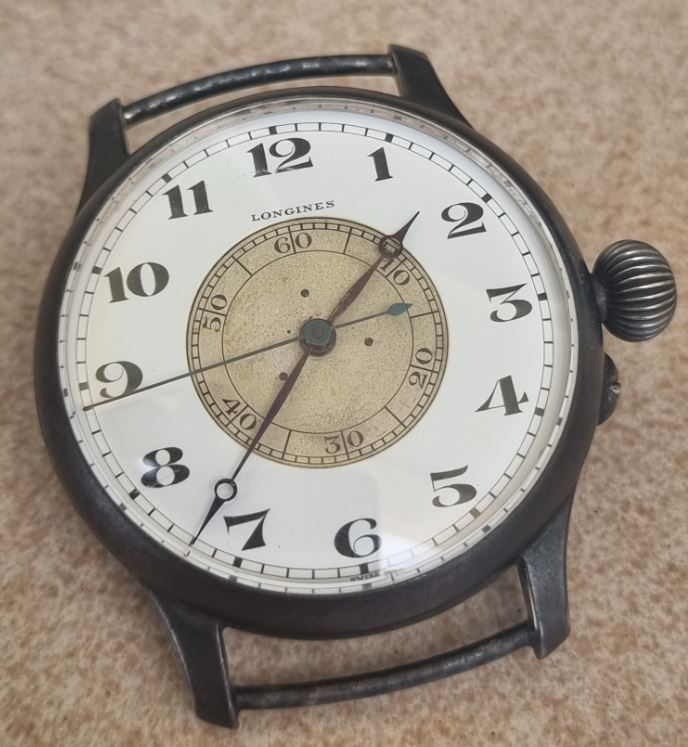
It stands to reason then that a special Longines Weems ‘Aerochronometer’ watch, with its back case marked BU.AERO U.S NAVY played a very special role in the Bureau of Aeronautics and U.S Naval history. The 47mm silver enamel dial watch was delivered as part of the very first batch of test production pieces to Wittnauer, the U.S agent in May 1930.
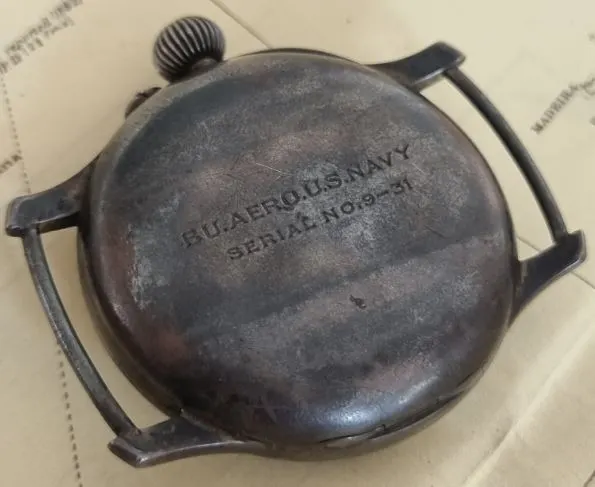
The Second-setting watch with serial number 4931574 is two serial numbers earlier than one of two known Lindbergh prototype Weems hour angle pieces (serial 4931576). Both Longines prototypes featured unique one-off experimental bezel creations and were the world’s very first calibrated rotating bezel wristwatches from any maker.
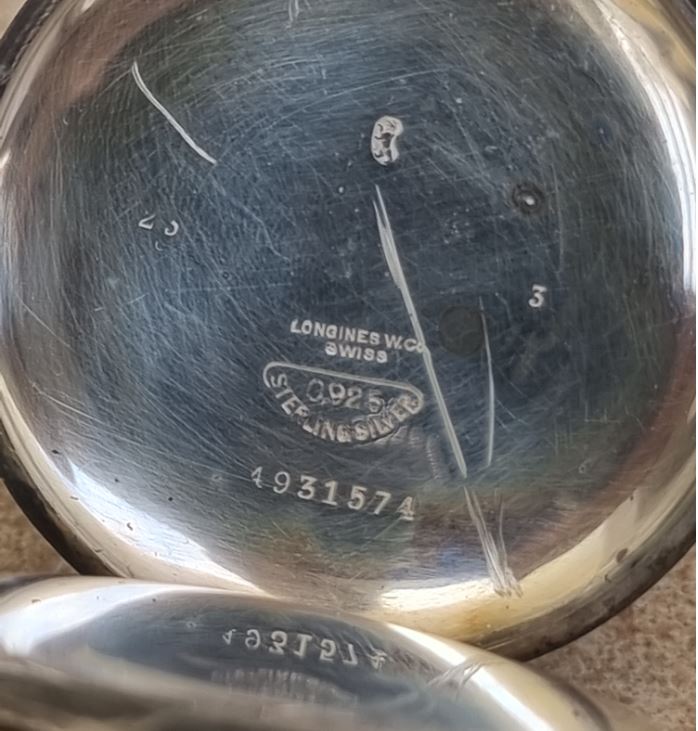
Both Lt. Commander Weems and his superior Rear Admiral Moffett recognized the need to train and improve the skills of naval pilots and navigators in the use of celestial and radio navigation. Weems played a multi-decade role conquering the challenges of air navigation much like Harrison’s challenge 200 years earlier in calculating longitude at sea. Having graduated the US Naval Academy in 1912, his calling in life came seven years later whilst stationed aboard one of 50[2] Naval ships, playing witness to the Navy(N) Curtiss(C) seaplanes that flew 2500ft overhead. “Lt. Cdr. Weems, a brilliant, inventive and determined young man knew as he tracked that first flight that navigation was his destiny”.[3]
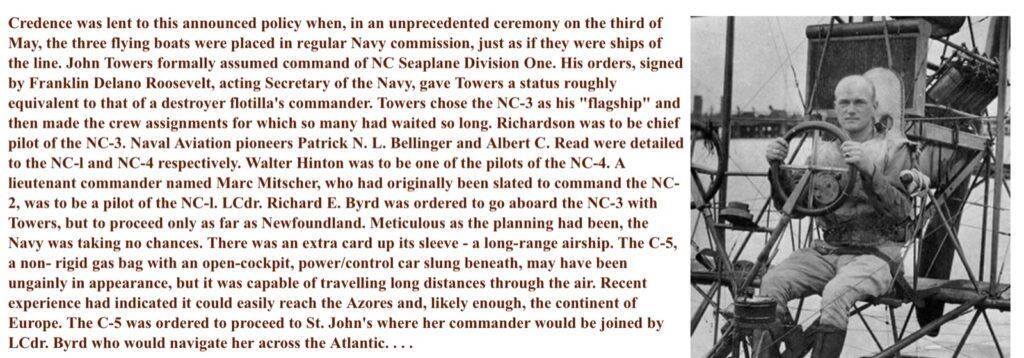
In May 1919, the American Navy sought to be the first to fly cross the Atlantic by plane using three Navy (N) Curtiss(C) flying boats in a 3905-mile voyage from New York state to Lisbon. Success followed for the five-man crew of NC-4, one of the so called ‘Nancies’ – a nickname of the Curtiss seaplane. The six leg, 19-day voyage included transit, maintenance and rest stops and was the very first successful aerial crossing of the Atlantic. Consequently, it brought kudos and national pride to the Navy.

The citation given by Acting Secretary of the Navy, Franklin D. Roosevelt to Lt. Stone, one of the pilots on 23 August 1919 for his part of the NC-4’s success read,
“I wish to heartily commend you for your work as pilot of the Seaplane NC-4 during the recent Trans-Atlantic flight expedition. The energy, efficiency, and courage shown by you contributed to the accomplishment of the first Trans-Atlantic flight, which feat has brought honor to the American Navy and the entire American Nation.”[4]
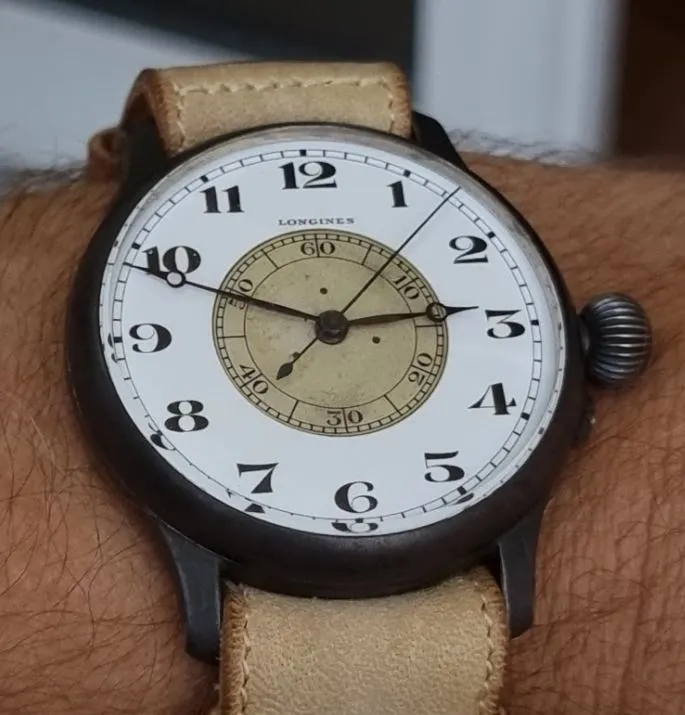
As a navigator on the deck below witnessing this aerial history above, his experiences would soon lead to the development of his Weems System of Navigation and the creation of the two most famous pilot watches in history. The famous Longines Second-setting watch enabled the exact second to be set, relative to the hour and minute hands. The inner chapter ring disc could be rotated in either direction to gain an additional accuracy of +/- 30 seconds by using a radio signal or other known exact timepiece and Lindbergh’s improved Hour-angle version which enabled and expedited the calculation of longitude.
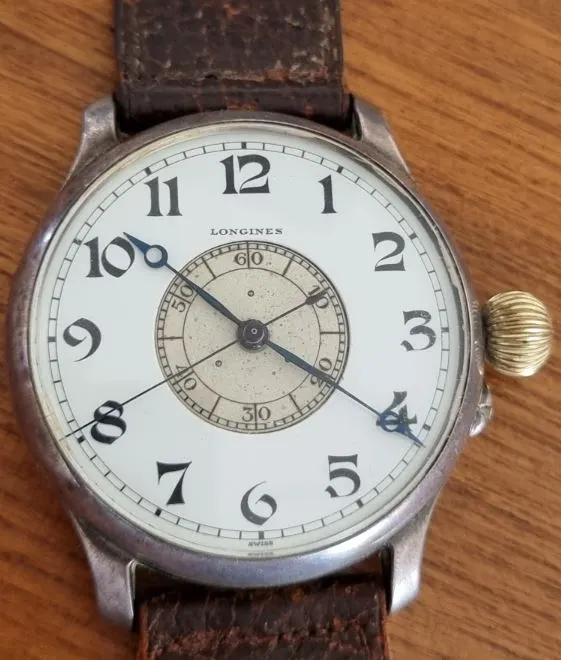
Weems watch was developed specifically for aviators with the Aircraft squadron’s battle fleet and was officially designated as a “second setting navigation watch”[5] by the U.S Naval Observatory. It was later distributed by them to the US Naval air stations and fleet and filled private and government orders for the next twenty odd years. In describing the creation, Moffett, the Chief of the Bureau of Aeronautics noted, “The suggestion… as to a moveable second-hand dial is considered to be a very valuable one, greatly facilitating the process of keeping a clock set to the exact time.”[6]
The very first two Weems prototypes featured a different case profile with thicker swept lugs, a smaller experimental 18.5mm chapter ring and used repurposed 18.69N dual time pocket watch calibre originally destined for the Turkish market a decade prior. The inner second setting disc mirrored the size used in a Longines Touran pocket watch providing more insight into its ‘Turkish’ heritage and the production development of this flight instrument.

The very first of these, owned by Weems, was delivered to Wittnauer on the 30th November 1928. The watch with serial number 3585867 was pictured in the first edition of Weems Air Navigation book published in 1931 and now lies in the Smithsonian. The other prototype just one serial number apart, was delivered to Baume in London, on 21st June 1930.
The first test production order #1395 placed in 1929 by Wittnauer followed, with delivery made April 10th and May 2nd 1930. The BU. AERO Weems with serial number 4931574 is one of just a handful of survivors from this delivery and one of the very first pieces ever made.
All first-generation models have a flatter case profile and the inner chapter ring increased to 21mm improving the legibility of the second setting chapter ring. The heavily oxidized all silver case on this only known Bu. Aero. US Navy survivor may have played a testing role some kind for the Bureau or its Chief.
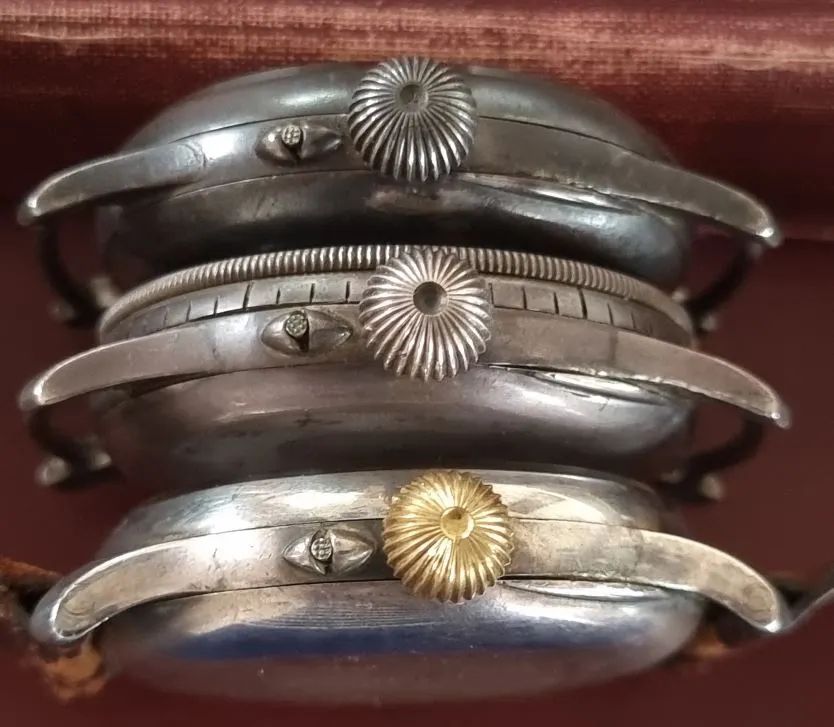
At the time the watch was delivered, the Bureau of Aeronautics and its Chief were inextricably tied to the formation of U.S Naval Aviation. This is best captured in Vice Admiral Aubrey W. Fitch’s quote. “Captain Moffett was the father of naval aviation. He saw the potential of airplanes as an offensive weapon and pursued his vision with an energy and determination that was remarkable.” [7]
Having joined the U.S Navy in 1890, he first took up flight training in 1913. A skilled American naval aviator and pioneer, his 1921 role as BU. AERO Chief was broad based, all-encompassing and he worked as an advocate for the development of a naval air arm to protect the US fleet and project power overseas. Post WWI, aviation was still relatively new technology and considerable debate existed within the military about the proper role of U.S air power.

Moffett was actively involved in the interwar years developing and expanding naval aviation. The BU. AERO Chief’s leadership and continuous work with Congress helped shape and expand the U.S Navy’s air arm. He worked tirelessly in all aspects of the naval arm developing new planes, aircraft carriers, technology, aviation safety, along with pilot and personnel training.
Moffett supported further development of Long-Range Radio Navigation (LORAN), which was initially developed to navigate over the Atlantic Ocean. The system worked by tuning into a radio station and using directional antennas to locate the direction of the transmitting one. The goal to create an all-weather system that would replace celestial navigation. A key architect in the establishment of the U.S. Naval Observatory’s Navigation Department, Moffett was a visionary leader in the field of naval aviation and air navigation, and his contributions helped to shape the modern aviation industry improving navigation methods for both air and sea travel.

Moffett served as Chief of the Bureau of Aeronautics from its founding in 1921, until he paid the ultimate price in an air tragedy. The BU. AERO Chief along with 72 others perished April 4th, 1933, after conducting a test flight aboard the Akron, a helium filled airship. The dirigible suffered storm damage to its tail that led to altitude loss and an ocean crash off New Jersey. A bitter stroke of irony that the very industry Moffett sought to bring greater safety to cost him his life.
Despite the setback and loss of Moffett, his significant contributions to naval aviation, air navigation and his legacy continued to influence the development of aviation in the decades that followed. The BU. AERO was merged with the BU. of Ordnance in 1959 forming the Bureau of Naval Weapons.
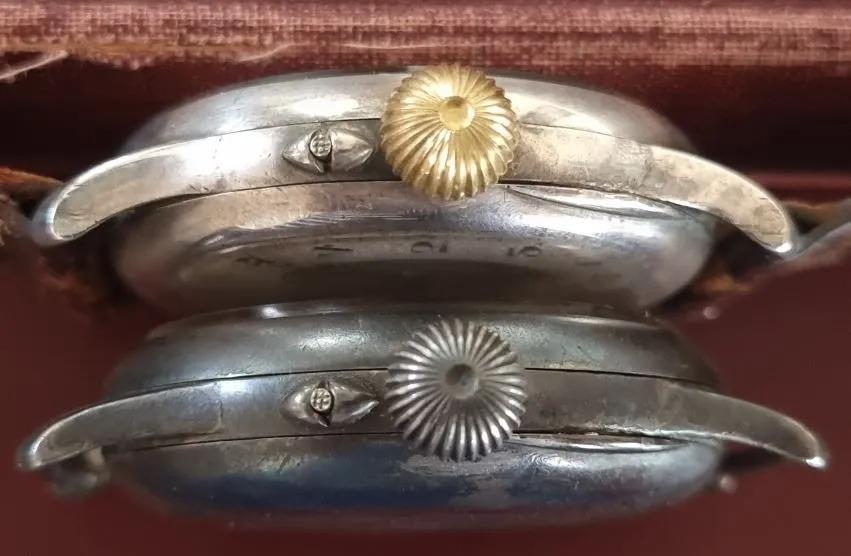
A lone all silver Longines BU. AERO Weems Second-setting survivor remains anchored to the navigation techniques developed by the grandfather of today’s GPS system. One of the very first test examples ever produced, the 90 plus year ticking creation is firmly attached to the inherent DNA of the U.S Navy, the Bureau of Navigation, and Rear Admiral Moffett. This rare, historical and seemingly unique BU. AERO Flightbird still has the wings to fly!
[1] The History of Naval Aviation, E.R. Johnson
[2] The U.S. Navy’s Curtiss NC-4: First Across the Atlantic | HistoryNet
[3] Weems & Plath, Weems & Plath Thermometers, Weems & Plath Hygrometers, Weems & Plath Barometers, Weems & Plath Weather Stations (weathershack.com)
[4] 1919: NC-4 Transatlantic Flight – Coast Guard Aviation History (cgaviationhistory.org)
[5] Air Navigation, Weems 1931 p401
[6] Air Navigation, Weems 1931 p401
[7] The First Team: Pacific Naval Air Combat from Pearl Harbour to Midway – John Lundstrom.
